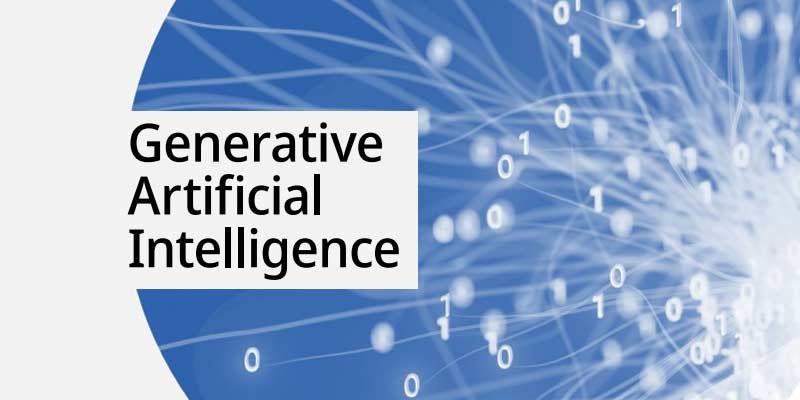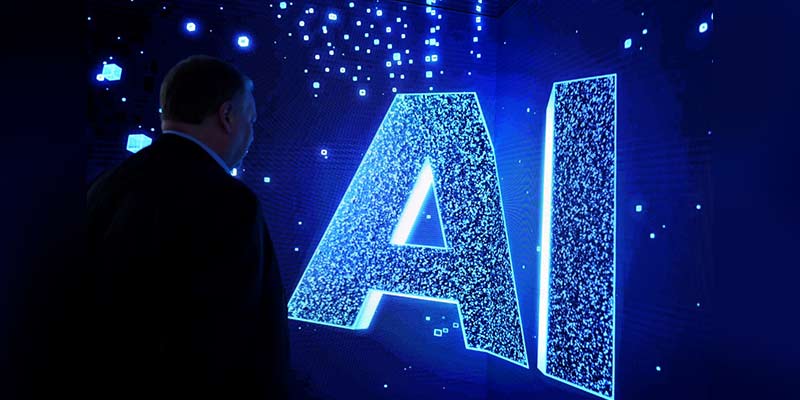- World
- Jul 05
China leads generative AI patents race
• China is far ahead of other countries in generative AI (GenAI) inventions like chatbots, filing six times more patents than its closest rival the United States.
• Generative AI, or GenAI, allows users to create content including text, images, music or software code, powering a range of industrial and consumer products, including chatbots such as ChatGPT, Google Gemini or Baidu’s ERNIE.
• GenAI is exploding with more than 50,000 patent applications filed in the past decade, according to the World Intellectual Property Organisation (WIPO).
• According to WIPO’s Patent Landscape Report, between 2014-2023, more than 38,000 GenAI patents came out of China, six times more than those filed by inventors in the United States (6,276), which came in second place.
• South Korea, Japan and India were ranked third, fourth and fifth respectively, with India growing at the fastest rate, the data showed.
What is generative AI?
• Generative AI (GenAI) is an Artificial Intelligence (AI) technology that automatically generates content in response to prompts written in natural language conversational interfaces.
• Rather than simply curating existing webpages, by drawing on existing content, GenAI actually produces new content.
• The content can appear in formats that comprise all symbolic representations of human thinking: texts written in natural language, images (including photographs to digital paintings and cartoons), videos, music and software code.
• GenAI has been an active area of research for a long time. Joseph Weizenbaum developed the very first chatbot, ELIZA, in the 1960s. However, GenAI as we know it today was heralded by the advent of deep learning based on neural networks.
• GenAI is trained using data collected from webpages, social media conversations and other online media. It generates its content by statistically analysing the distributions of words, pixels or other elements in the data that it has ingested and identifying and repeating common patterns (for example, which words typically follow which other words).
• While GenAI can produce new content, it cannot generate new ideas or solutions to real-world challenges, as it does not understand real-world objects or social relations that underpin language.
• In November 2022, OpenAI released ChatGPT (Chat Generative Pre-trained Transformer) to the public, which greatly increased public enthusiasm for GenAI. More than one million people signed up to use ChatGPT in just five days.
• The ChatGPT release has been described by many as an “iPhone moment” for GenAI. This is partly because the platform made it easier for users to access advanced GenAI models.
• GenAI is a cutting-edge technology that is poised to disrupt various economic, social, and cultural sectors, and it extends far beyond simple human-like text generation using chatbots.
How generative AI works?
The specific technologies behind GenAI are part of the family of AI technologies called Machine Learning which uses algorithms to enable it to continuously and automatically improve its performance from data.
The type of Machine Learning which has led to many of the advances in AI that we have seen in recent years, such as the use of AI for facial recognition, is known as Artificial Neural Networks (ANNs), which are inspired by how the human brain works and its synaptic connections between neurons. There are many types of ANNs.
Text generative AI uses a type of ANN known as a General-purpose Transformer, and a type of General-purpose Transformer called a Large Language Model. This is why AI Text GenAI systems are often referred to as Large Language Models (LLMs). The type of LLM used by text GenAI is known as a Generative Pre-trained Transformer, or GPT (hence the ‘GPT’ in ‘ChatGPT’).
Image GenAI and music GenAI typically use a different type of ANN known as Generative Adversarial Networks (GANs) which can also be combined with Variational Autoencoders. GANs have two parts (two ‘adversaries’) — the ‘generator’ and the ‘discriminator’. In the case of image GANs, the generator creates a random image in response to a prompt, and the discriminator tries to distinguish between this generated image and real images. The generator then uses the result of the discriminator to adjust its parameters, in order to create another image. The process is repeated, possibly thousands of times, with the generator making more and more realistic images that the discriminator is less and less able to distinguish from real images. For example, a successful GAN trained on a dataset of thousands of landscape photographs might generate new but unreal images of landscapes that are almost indistinguishable from real photographs.
Meanwhile, a GAN trained on a dataset of popular music (or even music by a single artist) might generate new pieces of music that follow the structure and complexity of the original music.
Sharp increase in patenting activity
• The rise of GenAI over the past few years has been driven primarily by three factors: more powerful computers, the availability of large datasets as a source of training data, and improved AI/machine learning algorithms.
• Developments such as the transformer architecture in LLMs have significantly advanced GenAI. This has made it possible to develop complex applications in many different fields.
• The technological advances in GenAI are reflected by the sharp increase in patenting activity. Over the past 10 years, the number of patent families in GenAI has grown from just only 733 in 2014 to more than 14,000 in 2023.
• Since the introduction of the transformer in 2017, the deep neural network architecture behind the Large Language Models that have become synonymous with GenAI, the number of GenAI patents has increased by over 800 per cent.
• The number of scientific publications has increased even more over the same period, from just 116 in 2014 to more than 34,000 in 2023. Over 25 per cent of all GenAI patents and over 45 per cent of all GenAI scientific papers were published in 2023 alone.
Which are the top organisations with the most patents in GenAI?
i) Tencent Holdings (China)
ii) Ping An Insurance Group (China)
iii) Baidu (China)
iv) Chinese Academy of Sciences (China)
v) IBM (US)
vi) Alibaba Group (China)
vii) Samsung Electronics (South Korea)
viii) Alphabet (US)
ix) ByteDance (China)
x) Microsoft (US).
• Tencent plans to add GenAI capabilities to its products such as WeChat to improve the user experience. Ping An focuses on GenAI models for underwriting and risk assessment.
• Baidu was one of the early players in GenAI and recently unveiled its latest LLM-based AI chatbot, ERNIE 4.0. The Chinese Academy of Sciences (fourth) is the only research organisation in the top 10 ranking.
• Image and video data dominated GenAI patents (17,996 inventions), followed by text (13,494) and speech or music (13,480).
Key locations of inventors
• China is at the forefront of global patenting activity in GenAI. China was responsible for more than 38,000 patent family publications between 2014 and 2023, based on the inventor addresses published on patents. Since 2017, China has published more patent families in this field every year than all other countries combined.
• With a total of around 6,300 patent families between 2014 and 2023, the US is the second most important research location for GenAI.
• The Asian countries of South Korea (4,155), Japan (3,409) and India (1,350) are also important research locations in GenAI, all ranking in the top 5 countries worldwide.
• The UK is the leading European location (sixth on a global level), having published 714 patents in the same period. However, Germany is close behind (708 patent families) and has published more GenAI patents than the UK in recent years.
• These seven inventor locations account for the majority of patenting activity related to GenAI, contributing around 98 per cent of the dataset, with a few contributions from other countries such as Canada, Israel and France.
Top application areas of GenAI patents
i) Software
ii) Life sciences
iii) Document management and publishing
iv) Business solutions
v) Industry and manufacturing
vi) Transportation
vii) Security
viii) Telecommunications.
• GenAI is bound to have a significant impact on many industries as it finds its way into products, services and processes, becoming a technological enabler for content creation and productivity improvement.
• For example, there are many GenAI patents in life sciences (5,346 patent families between 2014 and 2023) and document management and publishing (4,976).
• In the life sciences sector, GenAI can expedite drug development by screening and designing molecules for new drug formulations and personalised medicine. In document management and publishing, GenAI can automate tasks, save time and money, and create tailored marketing materials.
• Other notable applications with GenAI patents ranging from around 2,000 to around 5,000 over the same period are business solutions, industry and manufacturing, transportation, security and telecommunications.
• In business solutions, GenAI can be used for customer service chatbots, retail assistance systems, and employee knowledge retrieval. In industry and manufacturing, GenAI enables new features like product design optimisation and digital twin programming. In transportation, GenAI plays a crucial role in autonomous driving and public transportation optimisation.
Manorama Yearbook app is now available on Google Play Store and iOS App Store



